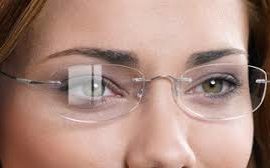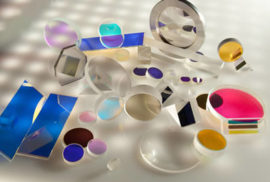
Quantum Innovations plans to re-brand coatings on lenses (like anti-reflective coatings) to communicate more effectively to consumers: enter Light Enhancing Technology.
 Lenses are a miraculous invention. Materials of specific refractive indexes coupled with thickness differentials and shapes using complex mathematics allow a lens wearer to be able to focus on an image that, without the lens, they could not clearly see. Amazing!
Lenses are a miraculous invention. Materials of specific refractive indexes coupled with thickness differentials and shapes using complex mathematics allow a lens wearer to be able to focus on an image that, without the lens, they could not clearly see. Amazing!
This invention, in all its complexities, has improved everyday life for many of us. But, all objects on earth have loss of light through reflection, absorption or scatter. Therefore the same lens that allows the light to be focused properly on the wearer’s retina also interferes with light. 
As we know, the amount of light lost due to a lens is directly related to its refractive index. The higher the refractive index, the more light is reflected or lost and therefore does not make it to the wearer’s eye. This can dramatically change the light transmission to the eye.
 As we all know, we can resolve most of this loss through “anti-reflective coatings”. But, does this name truly do justice to what this Light Enhancement does? I have talked to bartenders, waitresses, flight attendants, and convenience store clerks and have asked them why they don’t have a coating on their lenses; it almost always comes down to, “I don’t mind the glare, so why should I pay more to get rid of it.”
As we all know, we can resolve most of this loss through “anti-reflective coatings”. But, does this name truly do justice to what this Light Enhancement does? I have talked to bartenders, waitresses, flight attendants, and convenience store clerks and have asked them why they don’t have a coating on their lenses; it almost always comes down to, “I don’t mind the glare, so why should I pay more to get rid of it.”
Or to translate, that is a cosmetic effect and I am not going to pay another hundred bucks for it. As soon as I tell them about lost light and that the coating actually enhances the lens so they can get most of that lost light back, they glow with amazement. “Why didn’t anyone tell me that?” is the first response I get. “You guys need to change the name” is the second.
Enhancing Your Lens, Enhancing Your Life
Taking the invention of the lens further, it is possible for us to take the light that is going through the lens and modify or enhance it to conditional specifications. We are also able to enhance the light going through a lens so that the light reaching the users eyes is increased. But, we can even highlight certain light for hunting or fishing. This can be done with dyes, but it can also be done with coatings.
Mirror coatings combined with dyes or polarizers create a visual experience that speaks to users uniquely. This can be with the colors they reflect, the colors they absorb, or the colors they transmit. Finding a golf ball on the course can be much easier with the right pair of lenses!!
We can also absorb wavelengths of light with coatings. Our newest Light Enhancing Technology is absorbing short wavelength light to help with Computer Vision Syndrome and Digital Eye Strain. We can absorb a little or a lot of High Energy Light. With this same technology, we can absorb some of the UV spectrum. This makes for a much happier lens wearer.
Changing the Game
Reflecting Infrared will be a coating enhancement that we will see in the not too distant future; retinal scanning and pigment scanning will become more prevalent.
All of these types of coatings are enhancing the light going through the lens to give the wearer a better visual experience for their lifestyle and for their lenses. Quantum has decided to rename or rebrand these coatings under the name Light Enhancing Technology (LET). We think the American consumer can easily understand that we are enhancing or improving the visual experience. We also want to distance ourselves from the negative connotation of anti-reflective and talk about how we LET more light transmission get to the eye.
The miracle of sight through the modern lens solutions is a great gift. LET’s let everyone get the full benefit of those lenses by enhancing their visual experience through Light Enhancing Technology!
For additional information, see our Light Enhancing Technologies website at LightEnhancingTechnology.com.



